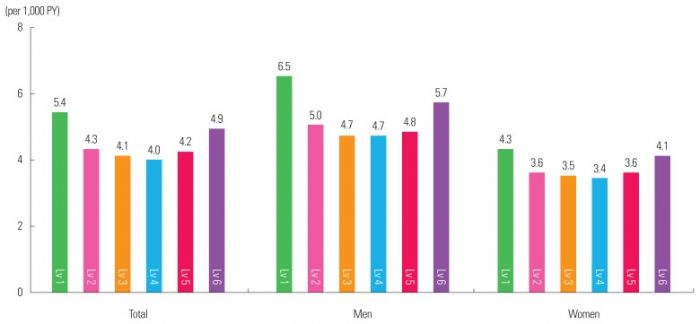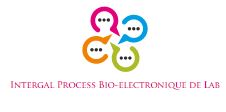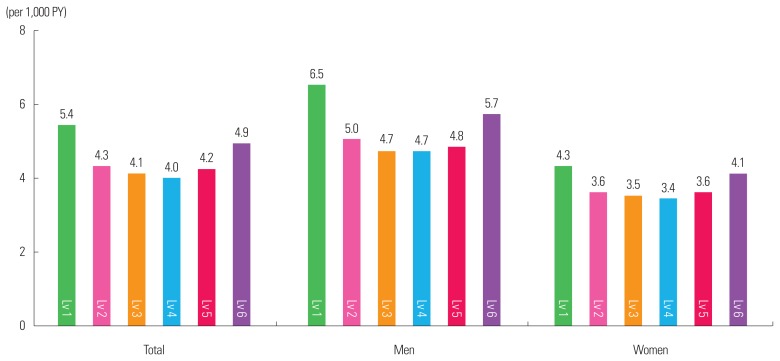Global prevalence of obesity continues to rise in recent years. Waist circumference (WC) reflect the composition of the body better than body mass index. Korean Society for the Study of Obesity Obesity Fact Sheet released in 2018 to address the incidence of obesity-related comorbidities according WC levels.
Data of Korea National Health Insurance Service database health checks from 2009 to 2016 were analyzed. abdominal obesity was defined as WC ≥90 cm in men and ≥85 cm in women.
the incidence of comorbidities and all-cause mortality was calculated after standardizing by age and gender based on 2010 census.From 2009 to 2015, the incidence rate of type 2 diabetes mellitus, hypertension, myocardial infarction and ischemic stroke increased in both men and women. Individuals with the lowest levels of WC has the highest rate of all-cause mortality was followed by those with the highest levels of WC in men, women, and population. Cancer incidence rates were increased because the number of WC-level rise between 2009 and 2016. In men, the incidence rate for colorectal, prostate and liver cancer increased as the level of WC increases.
The incidence rate of thyroid, colorectal, and stomach cancer increased as the level of the WC was up in women. In addition, the treatment costs continue to rise WC increased in both men and Obesity LI women.Based in 2018, a strategy to reduce abdominal obesity and associated comorbidities and treatment costs are a public health priority.

Estimating potential soil sheet Erosion in a Brazilian semiarid county using USLE, GIS, and remote sensing data.
This study aims to estimate soil erosion in Machados County, Brazil. Rainfall erosivitas calculated using the average monthly and annual rainfall over intervals of 30 years, the land was acquired by the equation erodibilitas based granularity, and topographic and land cover derived from DEM data and Sentinel – 2B image, respectively.
A GIS interface is used for parameter results spatialize and topography and land cover analysis. The results achieved allowed surmising that the loss of land to the risk of the study area is low, but significant, with an average value of 8.11 t / ha year.
About a quarter of the total area served the loss of land is high, above 20 t / ha year. Factors that affect soil erodibility biggest, with an average value of 0,028, and land cover, an average of 0.1409. Topographic factors on average 3,414 and rain erosivitas, found 2747.22 mm / year, considered low for the region.
Given the lack of conservative practices observed during the field work, ground stewarship P factors are considered first for assessment. The use of orbital images to get a C and expression factors were applied to calculate the soil erodibility provide adequate results. In addition, there is a need for research to monitor and quantify the erosion process in the Brazilian semi-arid, and tolerance of their erosion.

